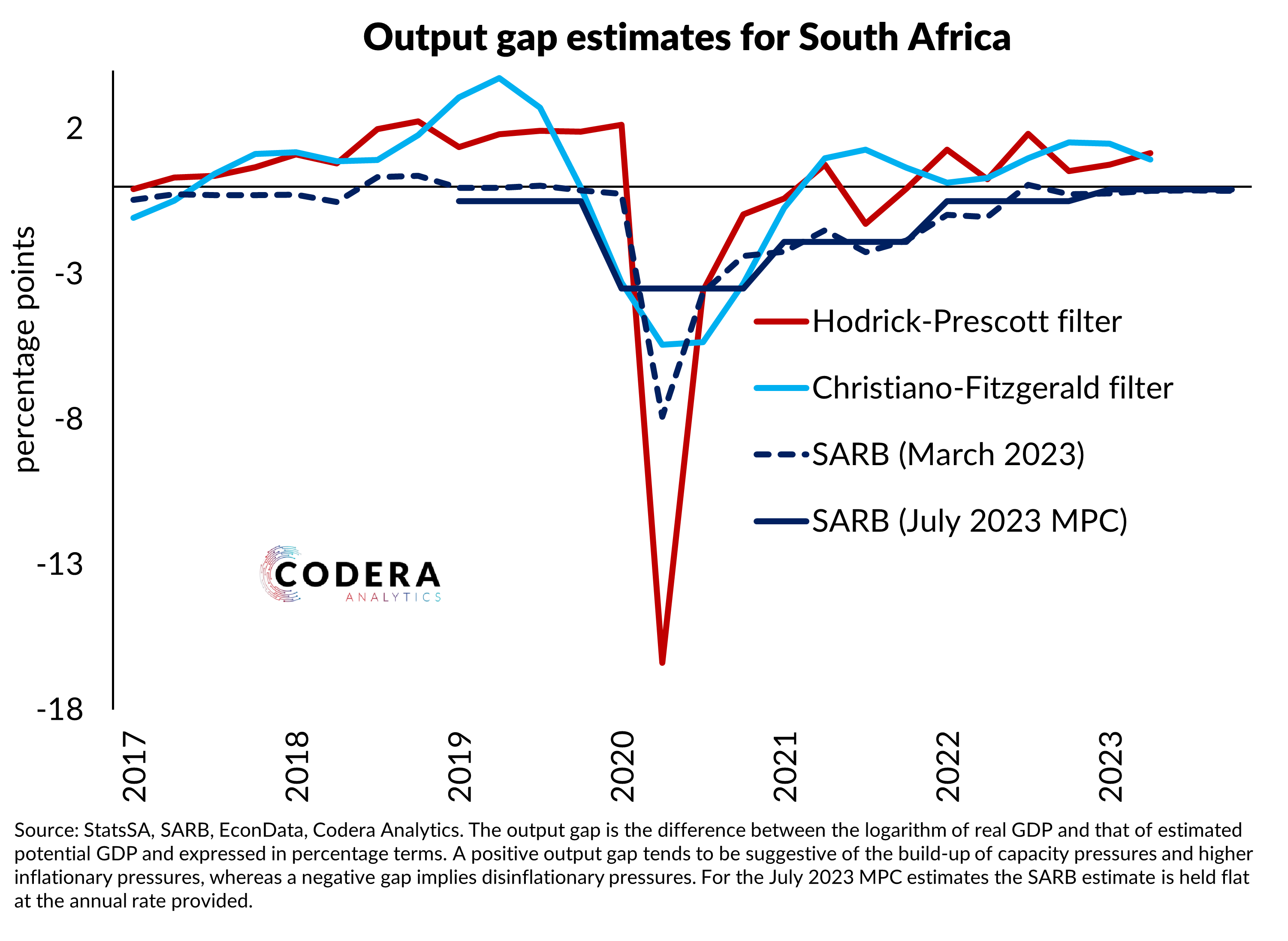What does yesterday’s South African GDP release imply for the state of the economy and capacity pressures? Simple statistical filters for estimating the output gap (a measure of economic slack) suggest that it remains in positive territory. Despite the slow growth of the economy, this suggests that there are mild demand pressures acting on prices. Why is it estimated to be positive by statistical filters such as Hodrick-Prescott and Christiano-Fitzgerald? These filters suggest that potential growth has been falling and, as a result, that the excess capacity built up during the COVID-19 pandemic has dissipated. The most recently published SARB assumptions (from the July 2023 MPC) imply that SARB sees economic growth to be largely in line with potential in 2023 (though their output gap estimates are slightly negative).

Footnote
You can read more about output gap estimation using our suite in this previous post. The COVID pandemic has likely had a marked impact on potential growth. The statistical filters used above are useful for identifying changes in the trend of GDP, but they do not disentangle the demand and supply shocks associated with the pandemic or control for the likely under-utilisation of capital and labour during this period. Estimating the impact of the pandemic and ongoing loadshedding on potential growth requires the use of a structural model that can estimate the impact of these factors on the economy’s productive capacity. Lastly. the relationship between economic slack and inflation is time varying in SA, so the contribution of demand pressure on inflation must be estimated as we did in this paper.

